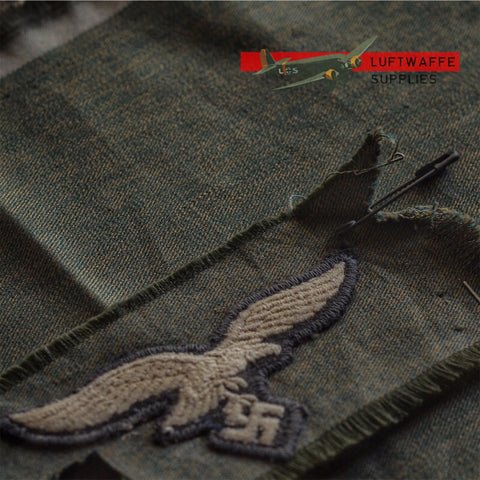How do we go about reproducing a piece of history?
Let’s get to the point ...
It’s been a while. Why now?
It must have been early 2017 when I was first asked to produce a 2nd pattern jump smock. Back then, there were still other reproductions available on the market and many reenactors where highlighting incorrect features that they wanted fixed in a new production.
It was also a time when my focus was not on creating camouflage clothing but rather a small but solid catalogue of Luftwaffe uniforms. Even though it was possible source plain green fabric that looked right, it was decided that it was not time for us to venture into such a project. With respect to the values we hold when doing our work, and to honour the “green devils” with a job well done, this project was not initiated.
We were yet to handle original jump smocks and learn more about the construction of this garment. However, I knew sooner or later I will get back to this, so I went out to the community and asked some key questions on which features were critical and which were desirable features. The feedback that you, the FJ community, had given me was at the ready to hit the ground running as soon as I decided to go ahead with the project.
So, what makes LWS ready to embark on the project, now?
What a journey it has been since 2017. A lot more effort was put into the offerings and in getting more in tune with the community. For over 18 months, Luftwaffe Supplies has been monthly restocking and launching new offerings. At the same time, I have been constantly researching authoritative books and getting my hands on hundreds of original uniforms and equipment. Hungry to learn, every opportunity was a new experience and brought me ever closer to handling a real jump smock.
In mid-2018, I felt that it was time - Both because the community was getting eager for a reproduction, and to assist groups in getting ready for Low-lands and Crete commemorative events in 2020 and 2021. At first, it was researching and analysing original specifications – the 1938 Luftwaffe directive for paratrooper clothing was instrumental in understanding the fine details of fabric composition (trivia: it wasn’t 100% cotton), number of threads used etc.
But this kind of research only takes you so far and I needed to cross reference the findings with an actual sample. It was only late last year that an opportunity proposed to acquire a smock out of a collection and be able to deconstruct it.
Let’s cut to the chase - What is the progress of project now?
I believe this will come as great news - We have an M38 Type II smock in hand! To be 100% honest, it’s the first Military-quality reproduction – and it’s dated 1941.

I can hear you say: A reproduction? But you said original?
Yes and Yes. What we have in hand is the rare original British Step-in jump smock that is an exact copy (you can say, a reproduction - although not exactly true) of a German smock, captured during the first operations in the west.
With no previous airborne experience and jump specific equipment, the British made a direct copy of the m38 smock and field tested in operations like the Bruneval Raid in February of 1942. All the features, construction composition, zipper placements and extra room in the seat are confirmed to match the original German production jump smock.


But you said you copied original fabric too?
Yes, I also did that. We were able to get a piece of fabric that was cut off as a memento by an Allied soldier in France. This piece of fabric was good enough to get a feel of what the original fabric looked and felt like. An original piece of fabric together with the original specifications from 1938 is an unbeatable way of producing the most authentic fabric.
Finally, I want to share with you the progress and status of the entire project, with the promise of delivering correctly, and with a price tag that doesn't break the bank (we should be able to confirm the price in a few weeks).
Our Grünmeliert fabric
Simply nothing to add. Front piece is an original cutoff, the back fabric is our reproduction.


